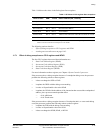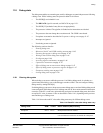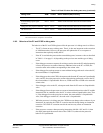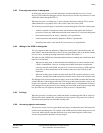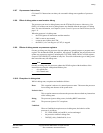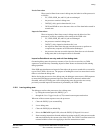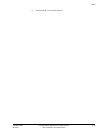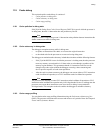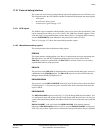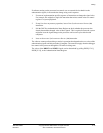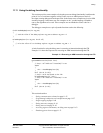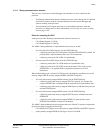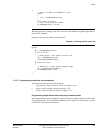
Debug
ARM DDI 0363E Copyright © 2009 ARM Limited. All rights reserved. 11-50
ID013010 Non-Confidential, Unrestricted Access
11.9 Cache debug
This section describes cache debug. It consists of:
• Cache pollution in debug state
• Cache coherency in debug state
• Cache usage profiling.
11.9.1 Cache pollution in debug state
If bit [0] of the Debug State Cache Control Register (DSCCR) is set to 0 while the processor is
in debug state, then the L1 data cache does not perform any line fill.
Note
No special feature is required to prevent L1 instruction cache pollution because instruction side
fetches cannot occur while in debug state.
11.9.2 Cache coherency in debug state
The debugger can update memory while in debug state:
• to replace an instruction with a
BKPT
, or to restore the original instruction
• to download code for the processor to execute on leaving debug state.
The debugger can maintain cache coherency in both these situations with the following features:
• If bit [2] of the DSCCR is set to 0 while the processor is in debug state, then the processor
treats any memory access that hits in L1 data cache as write-through, regardless of the
memory region attributes. This guarantees that the L1 instruction cache can see the
changes to the code region without the debugger executing a time-consuming and
device-specific sequence of cache clean operations.
• After the code is written to memory, the debugger can execute either a CP15 instruction
cache invalidate all operation, or a CP15 instruction cache invalidate line operation.
Note
The processor can normally execute CP15 instruction cache invalidate all operation or CP15
instruction cache invalidate line operation only in Privileged mode. However, in debug state the
processor can execute these instructions even when invasive debug is not permitted in
Privileged mode. This exception to the rule enables the debugger to maintain coherency.
11.9.3 Cache usage profiling
You can obtain cache usage profiling information using the Performance Monitoring Unit
(PMU). The processor can count cache accesses and misses over a period of time. See Chapter 6
Events and Performance Monitor.



